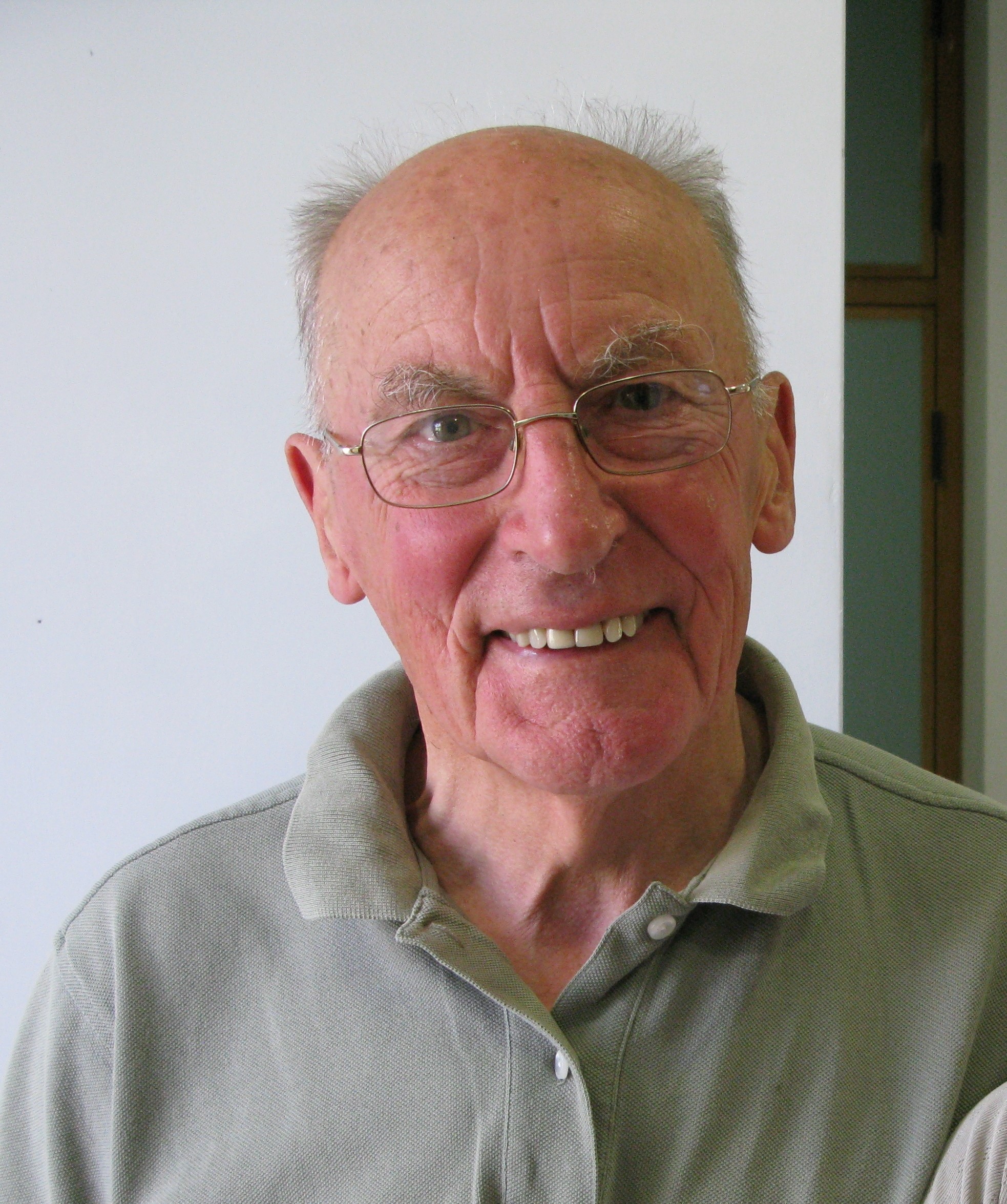
(Watercolour by John Tusting)
St Nicholas Church, lacking any real congregation, had been deconsecrated in the late 1960s.
From that time, the building was converted into a “Camping Barn” where young people, bikers and hikers could find refuge for the night, sleeping on mattresses strewn across the bare floor.
There were basic cooking facilities, some showers and outside lavatories located by the north doorway. Heating was provided by a tiny cast-iron stove in the middle of the nave.
Ever since this first transformation, the caretaker, appointed by the Diocese, was Peter Herald who lived in Bedford but diligently looked after everything, plumbing, electricity and cleaning. It was a remarkable feat of endurance, skill and dedication.
The Archdeacon of Bedford, Malcolm Lesiter, encouraged groups of youngsters to use Chellington. Malcolm and the groups came up from Watford by train to Bedford, biking from the station to Chellington. There were many successful trips like this, sometimes including members of his own family and, of course, his daughter Rachel.
Sadly, the Local Authority Health & Safety visited Chellington and found the facilities totally unacceptable so virtually closing Chellington down immediately.
It was to be expected. The outside lavatories, with no separation of gender, no lights and considered “unsafe” at night from passers-by possibly intruding etc, etc. Washing facilities were equally primitive, as was the basic “kitchen”.
The Diocesan Synod were unable to fund any improvements so planned to hand over the building to Historic Churches Trust which would mean everything being “boarded up”, windows, doors, any opening shut up.
The news of possible closure spread amongst the young people. On the day of Synod meeting, a group of youngsters picketed in the yard outside with placards protesting at the prospect of losing Chellington forever.
Happily, they were heard in the Synod sufficiently loud enough for the members to change their minds. They asked the Bishop of Hertford, Christopher Foster, to chair an investigating group to advise Synod on possible solutions.
I was invited to represent the parish of Carlton with Chellington. David Green, the Diocesan Youth Officer, was also recruited. We met on 12th December 1998, and got to work immediately. We engaged an Architect to report on the general state of the building. His report was encouraging, declaring there were no fundamental problems, it was good for another 60 years.
We were warned by Synod that there were no Diocesan funds available for remedial work.
The Bishop’s final report was positive and recommended refurbishment of Chellington into a modern, residential Youth Centre with a target spend of £100,000.
We set out not knowing if we could raise the funds to succeed. We met in Dave Green’s house with his wife, Ann Green, the Architect, Bruce Deacon, and Peter Herald.
Countless meetings followed, looking at various designs and layouts. We explored the alternatives with the Planners and English Heritage. The extension (Ibbett Room and toilets) was the most difficult to agree. Why didn’t we build a separate building for accommodation and toilets? Clifton Ibbett was an early contributor and very generous donor.
In the end, and in desperation, we appealed to the Diocesan Bishop, Christopher Herbert and our MP, Alistair Burt, to help break the deadlock. Together they were successful and we had full Planning Permission in 10 days.
We sought out quotations from a number of builders and contractors. We engaged Catherine Farrell as our Fundraiser. We were on our way! Early on, we decided to go for the best materials available in all aspects of the work (not lowest quotes). On completion, we actually spent £1.3 million.
Chellington was re-opened in 2005 by the Lord Lieutenant, Sir Samuel Whitbread.
At this point, two of the most important sponsors of the whole project must be thanked.
Carlton Education Trust, chaired by Daniel Hanbury, gave a substantial sum for the build. More importantly, CET continued to support the operation of the centre for at least 15 years with substantial grants – we were dependent on CET’s generosity to survive. CET Treasurer, David Oldrey, was always supportive and gave us good advice about standing on our own feet.
David Reynolds of the Edith Winifred Hall Trust came onto the scene, completely re-tarmacking the driveway and making very substantial grants over the years, especially for the new Herald Building which David opened in 2021. Chellington now has an office on site, a store for mowers, etc. and toilet/shower facilities for campers.
We needed to gain Charitable Status for Chellington so the Diocese thought it best for Chellington to join up with their “Reach Out” projects and their canal boats.
It was an uncomfortable partnership, too remote and lacking sensible leadership. “Reach Out” went into Administration in 2015, leaving Chellington stranded. We formed a new charity but eventually had to buy back the contents of Chellington from the Administrator and regain the keys.
Throughout this crisis, Rachel Lesiter provided the most articulate and most passionate argument to allow Chellington to prosper. Rachel has constantly helped to drive Chellington forward with her absolute commitment and unlimited energy.
We started out again with Scott Holden and his partner Claire Merrick who, together, have given the day-to-day impetus to bring back Chellington to life.
Today Chellington is flourishing, groups coming from all over the country.
This is a personal note with the sole purpose of expressing my enduring gratitude to the people named. Chellington would not exist if it were not for them.
John Tusting
April 2023
